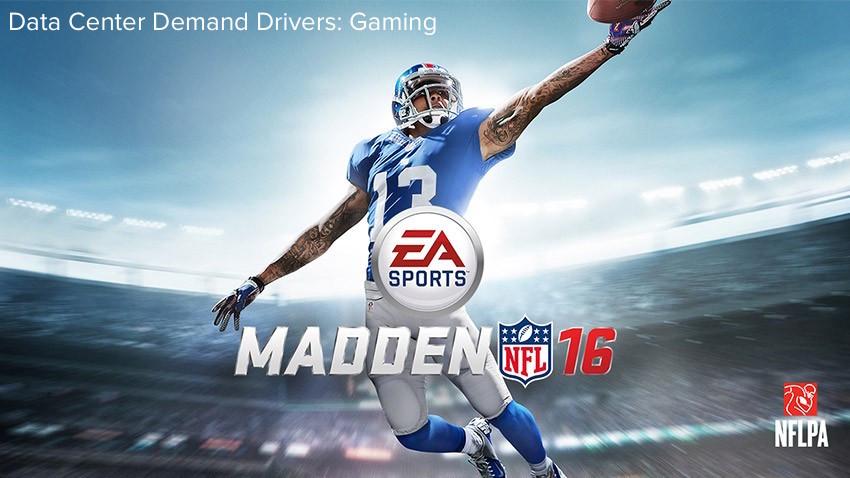By Luke Smith · 2/10/2016

Growth in the data center market is tied to several drivers, and one of them is the gaming industry. Video games are growing in popularity. In a recent report by the Entertainment Software Association, 155 million Americans play video games. Furthermore, four out of five households in the United States own a device with video game capabilities, with 51% of households owning a device that is dedicated to playing games (PC's, gaming consoles, handheld gaming systems). Gaming has grown so much that even ESPN has started covering eSports, or competitive online gaming. As the gaming industry increases in size, so does its need for scalable, data center capacity.
The growth in the gaming industry is tied to several different sources:
Console Gaming – While the early Xbox and PlayStation consoles allowed groups of eight people to play against each other, through Xbox Live and PlayStation Network, today's consoles allow groups of 70 or more people to play against one another. Many console games now can only be played in an online multiplayer aspect. PlayStation reports that they have over 100 million users on the PlayStation Network, and Microsoft reports that they have approximately 50 million users. Because the cost of the game system ($350) and the game (approximately $60) are expensive, companies like PlayStation and Microsoft must ensure it works for the end user. Since gaming occurs online, these companies have proper infrastructure able to maintain a fast connection, prevent the game from crashing, and smoothly handle millions of people connecting to each other. Many game companies have dedicated servers solely for hosting multiplayer on one specific game.
MMO (Massively Multiplayer Online) Games – In this game type, players log in to a world and interact with other players to complete quests, compete, and socialize. A world is simply a system of servers that the players access to play the game. While different worlds are often the same, they allow more players to play the game, and offer different styles of gameplay. The largest MMO is World of Warcraft, with over 5.6 million consistent users and an average of 35,000 players per world.
Mobile Games – Most people with a smartphone have some sort of game, whether it be Angry Birds or Clash of Clans. The Apple App Store boasts of over 500,000 games and approximately $3 billion spent on mobile games.
Streaming – Many users prefer cloud gaming instead of console gaming. Cloud gaming occurs when the player streams the game from a centralized server on to a computer, streaming console, or mobile device, circumventing the need for a console and expensive equipment. Instead of pressing a button on a controller and your PlayStation processing that function, the game server processes the function and simply streams it to your screen. The servers are able to support a wider range of functions and perform much better than a console or PC.
E-Commerce – Previously, games were played from a physical disk or cartridge. Now, while many games are still sold as physical copies to be installed on a hard drive, many games are downloaded from on online marketplace, like the Xbox Live Marketplace, PlayStation Store, or Steam. Steam alone has over 6,000 games for sale, with those games being downloaded over 781 million different times. Most games also have some sort of in-game purchase system that allows you to buy items that further your game success. For example, Star Citizen, a space exploration MMO, allows players to buy new ships and upgrades for their current ships. While most purchases are reasonably priced, some users are willing to pay significant amounts of money to be the best. A gamer by the name of Ozy311 has spent over $30,000 on Star Citizen.

With constant advances in gaming and the interconnection of consoles, PCs, and mobile phones, data centers must be able to maintain the level of function and uptime that gamers expect, especially when they are paying for that game. Data centers are expected to efficiently scale load with the changing number of users playing at any point in time. Furthermore, gaming companies need their presence spread out to decrease latency, allowing players to connect to their multiplayer games quickly. Much of the data has to be secure, with the amount of personal information used on their e-commerce platforms. As the streaming experience in the gaming industry becomes more popular, these companies will continue to depend on and expand data center infrastructure to support the massive number of people that access their services.